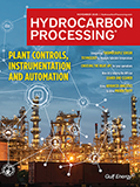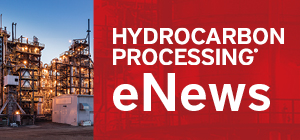Environment
HIF Global and Baker Hughes to collaborate on DAC technology
HIF Global and Baker Hughes announced an agreement to cooperate on the development of technology to capture carbon dioxide directly from the atmosphere (CO2 Direct Air Capture” or DAC).
Chevron, Talos to triple the size of Texas carbon capture project
Chevron and Talos Energy said they have tripled the size of a proposed carbon capture and storage hub for the U.S. Gulf Coast.
U.S. policy is conducive for new investments in energy transition said Repsol's CEO
The U.S, is attracting investment in renewables, hydrogen, biofuels, etc. through new legislation, while the EU's rules could deter investors, Repsol's CEO said at CERAweek.
Occidental to use Siemens Energy's technology for large-scale direct air capture plant
Siemens Energy compressors will be used at Occidental’s first large-scale direct air capture (DAC) plant in Texas’ Permian Basin.
AWS unveils startups selected for the Clean Energy Accelerator 3.0 program
Amazon Web Services (AWS) announced the startups selected for the Clean Energy Accelerator 3.0. The program is designed to facilitate collaborations with mature startups developing breakthrough clean energy technologies.
Philippines rushes to contain oil spill from sunken fuel tanker
Environment and disaster authorities in the Philippines rushed to contain an oil spill on Friday from a sunken fuel tanker that has reached coastal towns on a large central island, warning of dangers to marine ecosystems if more oil leaks.
EU delays ICE ban phaseout after German pushback
European Union countries have delayed a planned vote next week on the bloc's landmark law to end sales of new CO2-emitting cars in 2035 after Germany questioned its support for the rules.
Cepsa to invest more than $3.8 B in sustainable energy/mobility by 2027
Spanish oil and gas company Cepsa plans to nearly double its investments over the next three years to a total of 3.6 B euros ($3.82 B), with more than half of that amount going to sustainable energy and mobility.
Dow and X-Energy to build first grid-scale, next-generation nuclear reactor for NA industrial sites
Dow and X-energy said they have agreed to develop and demonstrate the first grid-scale next-generation nuclear reactor for an industrial site in North America.
Saudi Aramco buys minority stake in company focused on more fuel-efficient gasoline engines
Saudi Aramco has agreed to take a minority stake in a new powertrain engine company that French car maker Renault SA and China's Geely Automobile Holdings Ltd plan to set up jointly.

- NAPCOR releases 2024 PET recycling report highlighting system efficiency gains and continued strength of PET circularity 12/12
- OQ courts other partners for petrochemical complex in Oman as SABIC drops out 12/12
- Brazil's BNDES approves $71 MM for carbon storage project 12/12
- Cuba on edge as U.S. seizure of oil tanker puts supply at risk 12/12
- China oil demand to plateau between 2025 and 2030 12/12
- Germany's PCK refinery says no impact from pipeline leak 12/12




